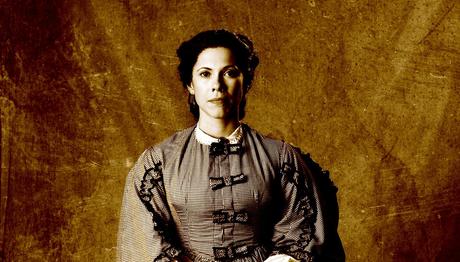 This was originally written for a class about how we construct women's history.
This was originally written for a class about how we construct women's history.Identity is a multi-faceted concept that scholarship has recently begun to explore. Gender identity plays an important role in both the slave narrative
The Bondwoman’s Narrative and the documentary Rebel, as the respective protagonists Hannah Crafts and Loreta Janeta Velazquez complicate their womanhood by cross-dressing as men. Both women unapologetically blur their gender identities by wearing men’s clothing in order to achieve their respective goals and solve their mutual “problem” of being women, but differ in their ideological reasons for doing so. Hannah and Loreta both don male garb in order to affect a desired outcome. After Hannah’s masters force her to work in the fields and get married, she runs away clothed in “a suit of male apparel” (Crafts 216). Dressing as a man obscures her true identity as a woman, keeping the people she encounters from suspecting that she is the runaway her masters are searching for (Crafts 218-219). Loreta also masquerades as male, but for a strikingly different reason: to serve in the Confederate army. She successfully enlists after her husband and children die, but she is only able to do so because she hides her feminine identity; when she finally is discovered, she is forced out of active combat.Both recorded their unusual modes of dress without giving excuses for their conduct. Hannah simply says that she saw the men’s clothes and felt they would “answer my purpose admirably” (Crafts 216). Considering that she stresses being a good Christian several times in the narrative, it is interesting that she does not hesitate from wearing men’s clothes, even though such dress would have been considered immodest by nineteenth century religious and social standards. It is less surprising that Loreta proudly talks about her cross-dressing, as this behavior evidences her patriotism. Her willingness to pretend that she is a man just proves how strongly she loves and desires to serve her adopted country. Ironically, dressing as a man helps Loreta assimilate into American culture, allowing a Cuban-American woman immigrant to pass as a white American-born man.

Hannah and Loreta’s cross-dressing behaviors are not entirely similar to each other: while Hannah dresses as a man to subvert the system of slavery, Loreta does so to bolster it as an institution. It is interesting to note this stark contrast in the two women’s motivations for the same non-socially sanctioned behavior. Considering Loreta’s higher social status and Hannah’s history as a slave, it’s unsurprising that the two disagree about slavery despite coming from the South.
Both Hannah and Loreta considered their identities as women problematic: Hannah believed that she would be more easily identified if she went on the run presenting a female gender identity, and Loreta knew that she would be barred from joining the army as a woman. They overcame the “problem” of being women by cross-dressing and passing as male, thereby taking agency in a world where they were disenfranchised due to their sex, minority race, and in Hannah’s case, social status. Although the two women come from very different backgrounds, both were drawn to cross-dressing for various reasons, boldly doing whatever it took to accomplish their aims.

